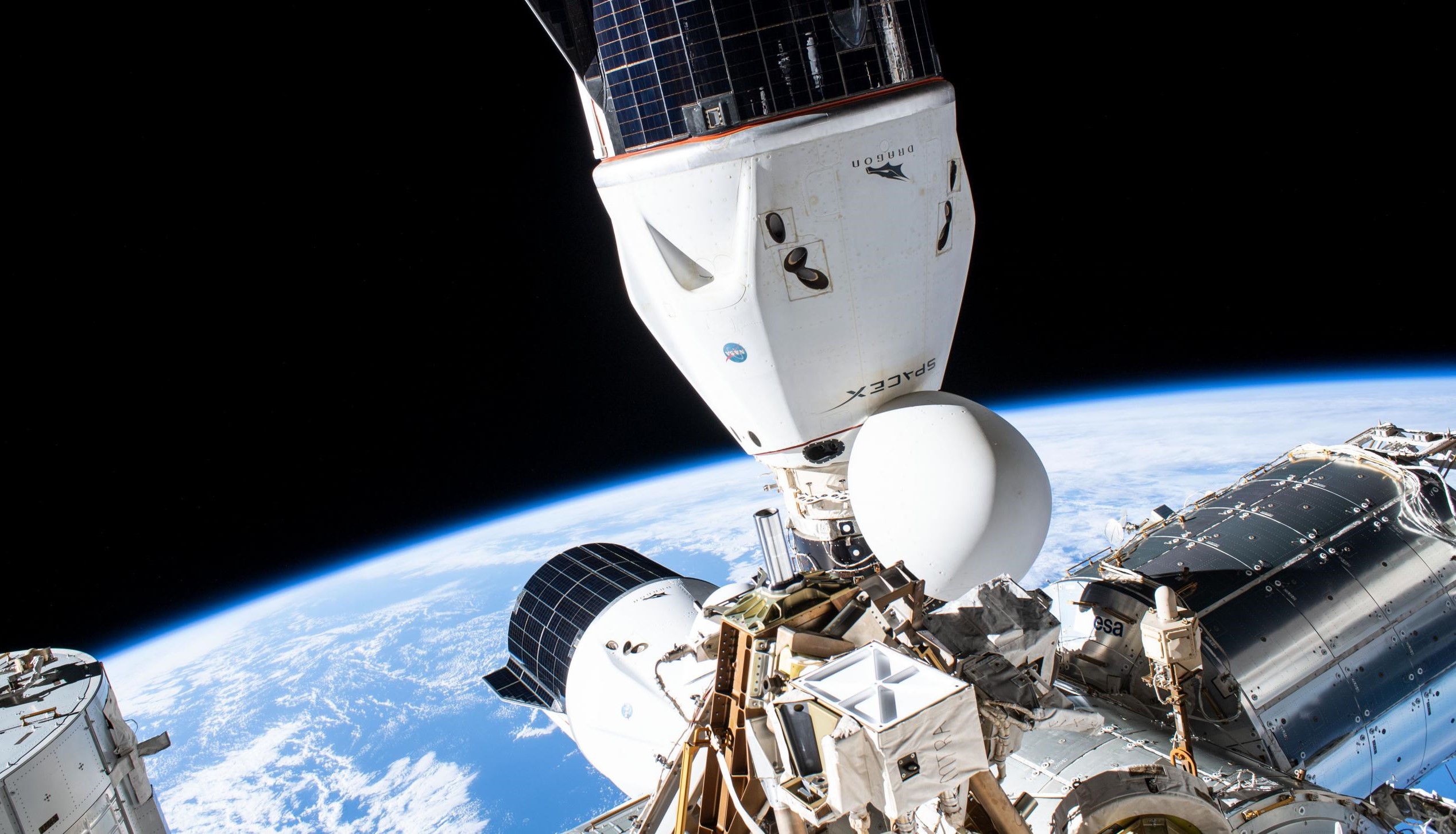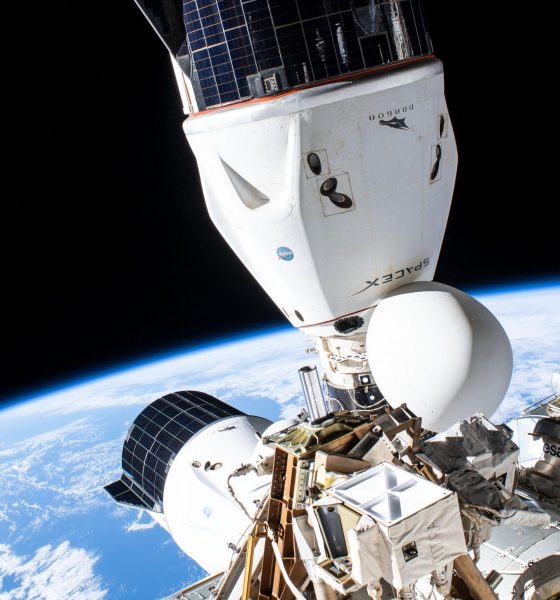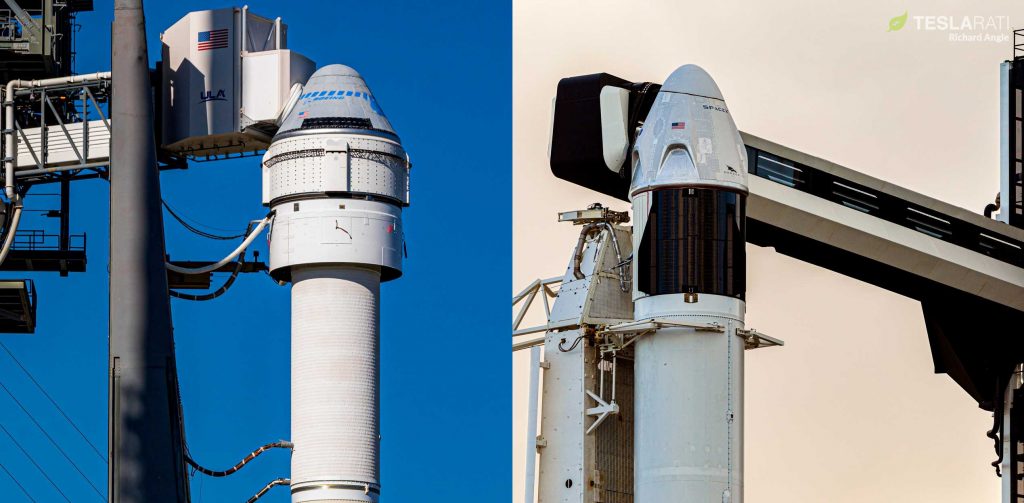

News
SpaceX a bastion of independent US, European spaceflight amid Russian threats
Russia has invaded Ukraine without provocation, triggering a series of diplomatic responses – sanctions in particular – that recently culminated in the aggressor deciding to cut ties with Europe on a number of cooperative spaceflight projects.
Dmitry Rogozin, director of Russia’s national ‘Roscosmos’ space agency, went as far as implying that the country might respond to the West’s aerospace sanctions by ending its support of the International Space Station (ISS), a move that could cause the football-field-sized structure to gradually deorbit and reenter Earth’s atmosphere. Were it not for the existence of two extraordinarily successful NASA programs and SpaceX in particular, Russia’s response – which, today, reads like a child’s tantrum – could easily have been a grave threat with far-reaching consequences.
In response to sanctions after its unprovoked invasion, Russia announced that it was withdrawing support from Europe’s French Guinea Soyuz launch operations, effectively killing Arianespace’s Soyuz offering and potentially delaying several upcoming European launches indefinitely.
As a quick side note, it’s worth noting that ULA’s lack of readily available rockets and the fact that Arianespace is likely at least a year or more away from regular Ariane 6 launches means that SpaceX may be the only Western launch provider in the world capable of filling in the gap that Arianespace’s Soyuz loss will leave. Aside from pursuing Chinese launch services, which is likely a diplomatic non-starter, the only alternative to rebooking former European Soyuz payloads on SpaceX rockets is to accept one or even several years of expensive delays.
On the other half of the coin is the International Space Station. NASA signed its first major contract with SpaceX in 2008, awarding the company $1.6 billion (and up to $3.5 billion) to launch a dozen Cargo Dragon supply missions to the ISS. Aside from effectively pulling SpaceX back from the brink of dissolution, those funds also covered a large portion of the development of its Falcon 9 rocket and Dragon spacecraft and simultaneously funded Orbital Science’s (later Orbital ATK and now Northrop Grumman) Cygnus cargo spacecraft and Antares rocket.
Despite suffering two failures in 2014 and 2015, NASA’s Commercial Resupply Services (CRS) program has been an extraordinary success. Together, Cygnus (17) and Dragon (24) have completed 41 deliveries in the last 12 years, carrying more than 110 tons (~240,000 lb) of cargo to the ISS.
Out of sheer coincidence, on February 19th, mere days before Russia’s act of war, Northrop Grumman launched the first Cygnus spacecraft designed to help ‘re-boost’ (raise the orbit of) the International Space Station. Since NASA’s premature 2011 retirement of the Space Shuttle, that task has been exclusively conducted by a combination of Russian spacecraft and the station’s Russian Zvezda module. Without regular Russian re-boost support, the station would deorbit and be destroyed. In other words, if push came to shove, the ISS could very literally fail without direct Russian involvement. Rogozin’s threat, then, was that Russia might cease to support ISS re-boosting if sanctions went too far.
However, even while ignoring the fact that NASA itself actually paid for and owns the ISS Zvezda propulsion module and in light of the first Cygnus spacecraft upgraded with a re-boost capability berthing with the station the very same week of the invasion, Russia’s threat rang decidedly hollow. Further, if Cygnus weren’t available, it’s still difficult to imagine that SpaceX wouldn’t be able to quickly develop its own Dragon re-boost capability if asked to do so.
While re-boosting is crucial, the situation has also emphasized just how little leverage Russia now has over even more important aspects of the International Space Station. Were it not for the existence of SpaceX and NASA’s Commercial Crew Program (CCP), the situation could be even direr for Europe and the US. Despite some pressure from lawmakers to only award the CCP contract to Boeing, NASA ultimately selected Boeing and SpaceX to develop independent crew capsules capable of carrying US astronauts to and from ISS in 2014. Following a near-flawless uncrewed Crew Dragon test flight in 2019 and an equally successful crewed demo mission in 2020, SpaceX completed its first operational Crew Dragon launch in November 2020.
Since then, SpaceX has launched another two operational ‘crew rotation’ missions, meaning that the company has now singlehandedly supported all US astronaut launch and recovery operations for 16 months. Due in part to extensive mismanagement, Boeing’s Starliner spacecraft was nearly destroyed twice during its first catastrophic uncrewed test flight in December 2019. The spacecraft is still months away from a second attempt at that test flight, likely at least 9-12 months away from a hypothetical crewed test flight, and potentially 18+ months away from even less certain operational NASA astronaut launches. Further, though ULA CEO Tory Bruno claims that the company doesn’t need any support from Russia, all Atlas Vs – the rocket responsible for launching Starliner – depend on Russian-built RD-180 engines.
Further adding to the mire, even Cygnus is not immune. The first stage of the Antares rocket that mainly launches it is both built in Ukraine and dependent upon Russian Energomash RD-181 engines. Northrop Grumman only has the hardware on hand for the next two Cygnus-Antares launches, at which point the company will have to either abandon its NASA contract or find an alternative launch provider. Once again, SpaceX is the only US provider obviously capable of filling that gap on such short notice and without incurring major delays of half a year or more.

In fewer words, without SpaceX, NASA would still be exclusively dependent upon Russian Soyuz rockets and spacecraft to get its astronauts to and from the space station it spent tens of billions of dollars to help build. Even in a best-case SpaceX-free scenario, NASA might instead be dependent upon a rocket with Russian engines to launch its own astronauts. Needless to say, the presence of US astronauts on Russian launches and ULA’s use of Russian engines were already extremely sensitive issues after Russia ‘merely’ invaded Ukraine’s Crimea region in 2014.
It’s hard not to imagine that US and European responses to Russia’s aggression would have been weakened if NASA and ESA astronauts were still entirely dependent upon Russia to access the International Space Station. Further, in the same scenario, given its withdrawal from French Guinea, it’s also not implausible to imagine that Russia might have severely hampered or even fully withdrawn its support of Western access to the ISS.
Put simply, Crew Dragon – now a bastion of independent European and US human spaceflight in an age of extraordinary Russian recklessness – has arguably never been more important and SpaceX’s success never more of a triumph than they are today.

News
Tesla starts showing how FSD will change lives in Europe
Local officials tested the system on narrow country roads and were impressed by FSD’s smooth, human-like driving, with some calling the service a game-changer for everyday life in areas that are far from urban centers.

Tesla has launched Europe’s first public shuttle service using Full Self-Driving (Supervised) in the rural Eifelkreis Bitburg-Prüm region of Germany, demonstrating how the technology can restore independence and mobility for people who struggle with limited transport options.
Local officials tested the system on narrow country roads and were impressed by FSD’s smooth, human-like driving, with some calling the service a game-changer for everyday life in areas that are far from urban centers.
Officials see real impact on rural residents
Arzfeld Mayor Johannes Kuhl and District Administrator Andreas Kruppert personally tested the Tesla shuttle service. This allowed them to see just how well FSD navigated winding lanes and rural roads confidently. Kruppert said, “Autonomous driving sounds like science fiction to many, but we simply see here that it works totally well in rural regions too.” Kuhl, for his part, also noted that FSD “feels like a very experienced driver.”
The pilot complements the area’s “Citizen Bus” program, which provides on-demand rides for elderly residents who can no longer drive themselves. Tesla Europe shared a video of a demonstration of the service, highlighting how FSD gives people their freedom back, even in places where public transport is not as prevalent.
What the Ministry for Economic Affairs and Transport says
Rhineland-Palatinate’s Minister Daniela Schmitt supported the project, praising the collaboration that made this “first of its kind in Europe” possible. As per the ministry, the rural rollout for the service shows FSD’s potential beyond major cities, and it delivers tangible benefits like grocery runs, doctor visits, and social connections for isolated residents.
“Reliable and flexible mobility is especially vital in rural areas. With the launch of a shuttle service using self-driving vehicles (FSD supervised) by Tesla in the Eifelkreis Bitburg-Prüm, an innovative pilot project is now getting underway that complements local community bus services. It is the first project of its kind in Europe.
“The result is a real gain for rural mobility: greater accessibility, more flexibility and tangible benefits for everyday life. A strong signal for innovation, cooperation and future-oriented mobility beyond urban centers,” the ministry wrote in a LinkedIn post.
News
Tesla China quietly posts Robotaxi-related job listing
Tesla China is currently seeking a Low Voltage Electrical Engineer to work on circuit board design for the company’s autonomous vehicles.

Tesla has posted a new job listing in Shanghai explicitly tied to its Robotaxi program, fueling speculation that the company is preparing to launch its dedicated autonomous ride-hailing service in China.
As noted in the listing, Tesla China is currently seeking a Low Voltage Electrical Engineer to work on circuit board design for the company’s autonomous vehicles.
Robotaxi-specific role
The listing, which was shared on social media platform X by industry watcher @tslaming, suggested that Tesla China is looking to fill the role urgently. The job listing itself specifically mentions that the person hired for the role will be working on the Low Voltage Hardware team, which would design the circuit boards that would serve as the nervous system of the Robotaxi.
Key tasks for the role, as indicated in the job listing, include collaboration with PCB layout, firmware, mechanical, program management, and validation teams, among other responsibilities. The role is based in Shanghai.
China Robotaxi launch
China represents a massive potential market for robotaxis, with its dense urban centers and supportive policies in select cities. Tesla has limited permission to roll out FSD in the country, though despite this, its vehicles have been hailed as among the best in the market when it comes to autonomous features. So far, at least, it appears that China supports Tesla’s FSD and Robotaxi rollout.
This was hinted at in November, when Tesla brought the Cybercab to the 8th China International Import Expo (CIIE) in Shanghai, marking the first time that the autonomous two-seater was brought to the Asia-Pacific region. The vehicle, despite not having a release date in China, received a significant amount of interest among the event’s attendees.
Elon Musk
Elon Musk and Tesla AI Director share insights after empty driver seat Robotaxi rides
The executives’ unoccupied tests hint at the rapid progress of Tesla’s unsupervised Robotaxi efforts.

Tesla CEO Elon Musk and AI Director Ashok Elluswamy celebrated Christmas Eve by sharing personal experiences with Robotaxi vehicles that had no safety monitor or occupant in the driver’s seat. Musk described the system’s “perfect driving” around Austin, while Elluswamy posted video from the back seat, calling it “an amazing experience.”
The executives’ unoccupied tests hint at the rapid progress of Tesla’s unsupervised Robotaxi efforts.
Elon and Ashok’s firsthand Robotaxi insights
Prior to Musk and the Tesla AI Director’s posts, sightings of unmanned Teslas navigating public roads were widely shared on social media. One such vehicle was spotted in Austin, Texas, which Elon Musk acknowleged by stating that “Testing is underway with no occupants in the car.”
Based on his Christmas Eve post, Musk seemed to have tested an unmanned Tesla himself. “A Tesla with no safety monitor in the car and me sitting in the passenger seat took me all around Austin on Sunday with perfect driving,” Musk wrote in his post.
Elluswamy responded with a 2-minute video showing himself in the rear of an unmanned Tesla. The video featured the vehicle’s empty front seats, as well as its smooth handling through real-world traffic. He captioned his video with the words, “It’s an amazing experience!”
Towards Unsupervised operations
During an xAI Hackathon earlier this month, Elon Musk mentioned that Tesla owed be removing Safety Monitors from its Robotaxis in Austin in just three weeks. “Unsupervised is pretty much solved at this point. So there will be Tesla Robotaxis operating in Austin with no one in them. Not even anyone in the passenger seat in about three weeks,” he said. Musk echoed similar estimates at the 2025 Annual Shareholder Meeting and the Q3 2025 earnings call.
Considering the insights that were posted Musk and Elluswamy, it does appear that Tesla is working hard towards operating its Robotaxis with no safety monitors. This is quite impressive considering that the service was launched just earlier this year.








